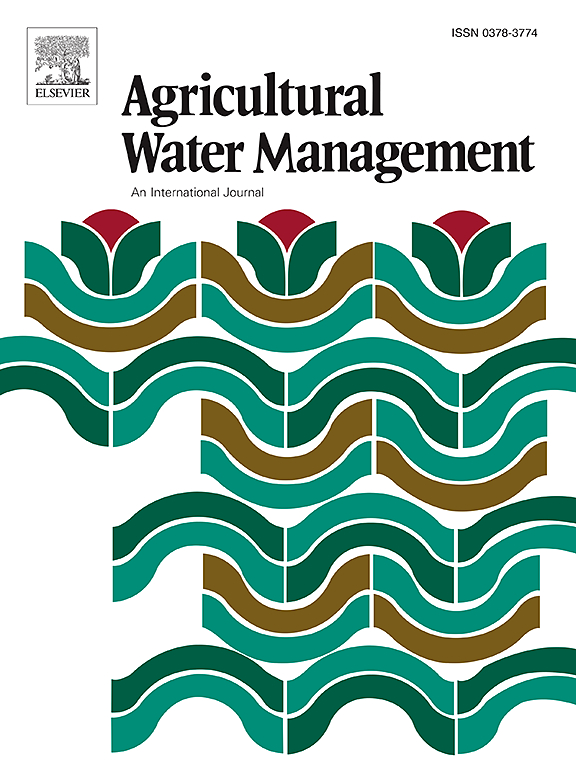缩小差距:用于数据稀缺流域蓝绿水模拟的可解释耦合模型(SWAT-ELM-SHAP)
IF 5.9
1区 农林科学
Q1 AGRONOMY
引用次数: 0
摘要
蓝水(BW)和绿水(GW)是水文循环的重要组成部分,但在数据稀缺的流域,对它们的精确模拟和解释仍然具有挑战性。我们提出了 SWAT-ELM-SHAP 模型,将土壤与水评估工具(SWAT)、集合学习模型(ELM)和夏普利加法解释(SHAP)方法结合起来。这种新方法在基于物理的水文模型、数据驱动的机器学习(ML)模型和整体解释的 SHAP 方法之间架起了一座桥梁,为改善数据稀缺流域的水资源管理提供了精确的蓝绿水模拟和整体结果解释。以 1991-2022 年湘江流域(源流域)向资水流域(目标流域)的蓝绿水调水模拟为例,检验和评价了耦合模型的可行性。模型性能结果表明,我们的新型耦合模型在数据稀缺流域的模拟精度有所提高。结合 SWAT 生成的水文响应特征和作为 ELM 输入的气象特征,我们的模型增强了每日蓝绿水模拟。在校核期(1991-2010 年),蓝绿水量、绿水流量和绿水储量的纳什-萨特克利夫效率系数(NSE)一直超过 0.77,在测试期(2011-2022 年)超过 0.8。耦合模式的解释结果表明,SHAP 整体解释为数据稀缺流域的蓝绿水模拟结果提供了良好的可解释性。总体而言,SWAT-ELM-SHAP 提供了一种可参考的方法,能够可靠、高效地模拟数据稀缺流域的蓝藻水体,更重要的是,能够进一步加深我们对环境变化条件下蓝藻水体的潜在因果关系、影响机制和变化机制的理解。本文章由计算机程序翻译,如有差异,请以英文原文为准。
Bridging the gap: An interpretable coupled model (SWAT-ELM-SHAP) for blue-green water simulation in data-scarce basins
Blue water (BW) and green water (GW) are crucial components of the hydrological cycle, but their accurate simulation and interpretation remain challenging in data-scarce basins. We propose the SWAT-ELM-SHAP model, coupling the Soil and Water Assessment Tool (SWAT), Ensemble Learning Model (ELM), and Shapley Additive Explanations (SHAP) method. This novel approach bridges the gap between a physically-based hydrological model, a data-driven machine learning (ML) model, and a holistically-interpreted SHAP method, offering accurate blue-green water simulation and holistic result interpretation for improved water resources management in data-scarce basins. We took the transfer simulation of blue-green water from the Xiangjiang River Basin (source basin) to the Zishui River Basin (target basin) as a case study to test and evaluate the feasibility of the coupled model during 1991–2022. The model performance results indicate that the simulation accuracy of our new coupled model is improved in data-scarce basins. In combination with hydrological response features generated by SWAT and meteorological features as the ELM input, our model enhances the daily blue-green water simulation. The Nash-Sutcliffe Efficiency coefficient (NSE) for BW, Green water flow (GWF), and Green water storage (GWS) consistently exceeds 0.77 during the calibration period (1991–2010) and exceeds 0.8 during the testing period (2011–2022). The interpretation results of coupled model demonstrate that SHAP holistic interpretation provides good interpretability for blue-green water simulation results in data-scarce basins. In general, the SWAT-ELM-SHAP offers a referenced approach that can reliably and efficiently simulate blue-green water in data-scarce basins, but more importantly, can further our understanding of the potential causal relationships, influence mechanisms, and variation mechanisms of blue-green water under changing environmental conditions.
求助全文
通过发布文献求助,成功后即可免费获取论文全文。
去求助
来源期刊

Agricultural Water Management
农林科学-农艺学
CiteScore
12.10
自引率
14.90%
发文量
648
审稿时长
4.9 months
期刊介绍:
Agricultural Water Management publishes papers of international significance relating to the science, economics, and policy of agricultural water management. In all cases, manuscripts must address implications and provide insight regarding agricultural water management.
 求助内容:
求助内容: 应助结果提醒方式:
应助结果提醒方式:


